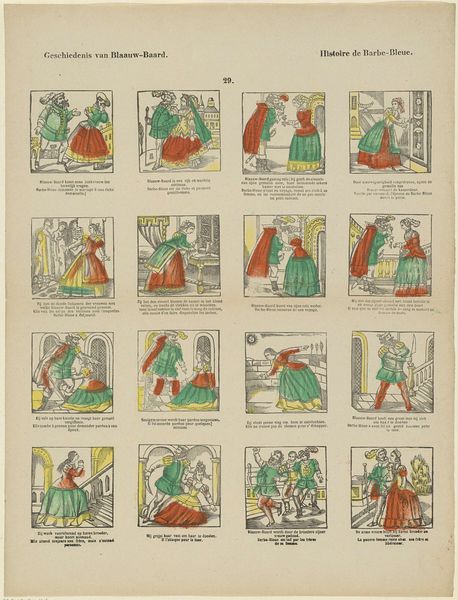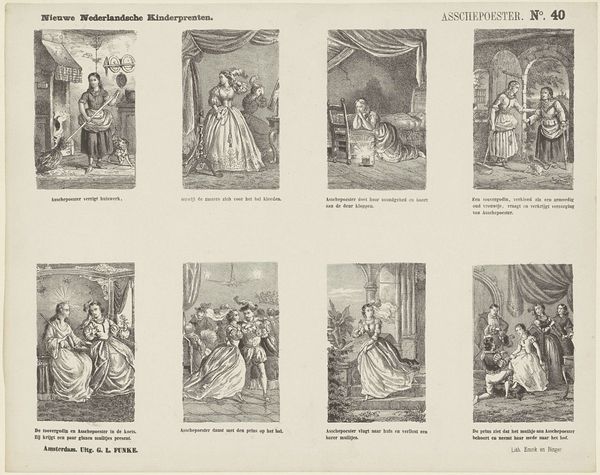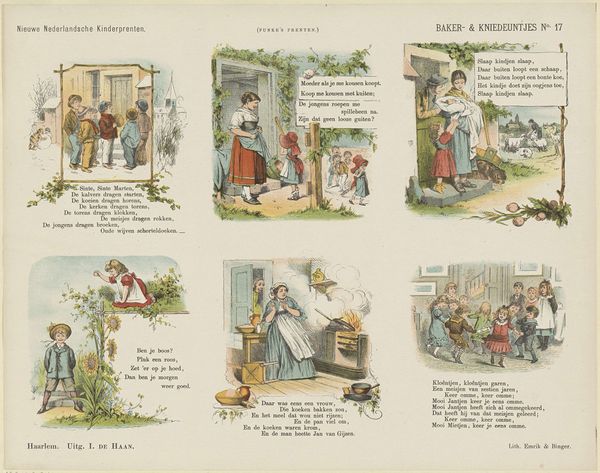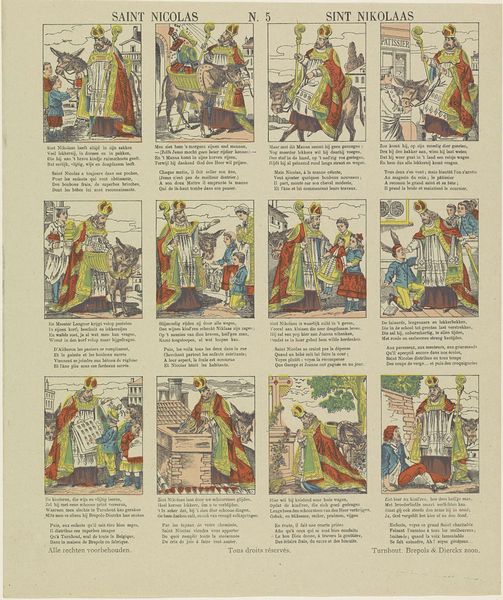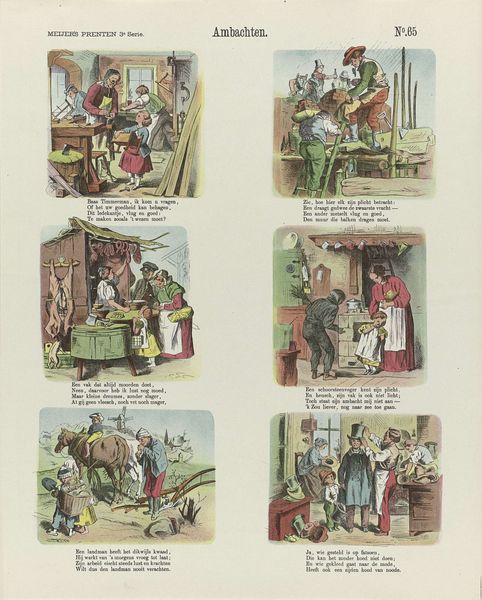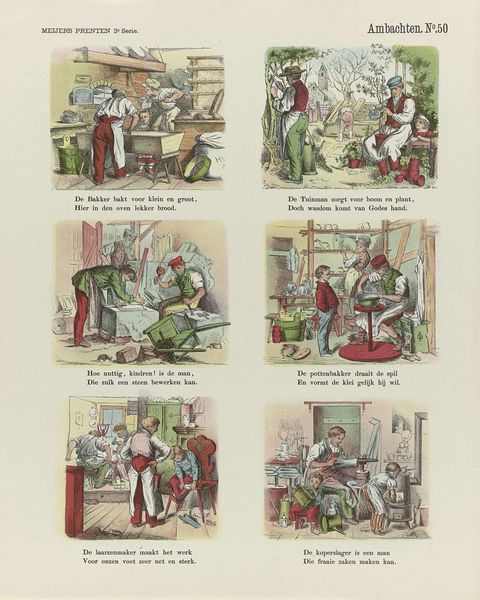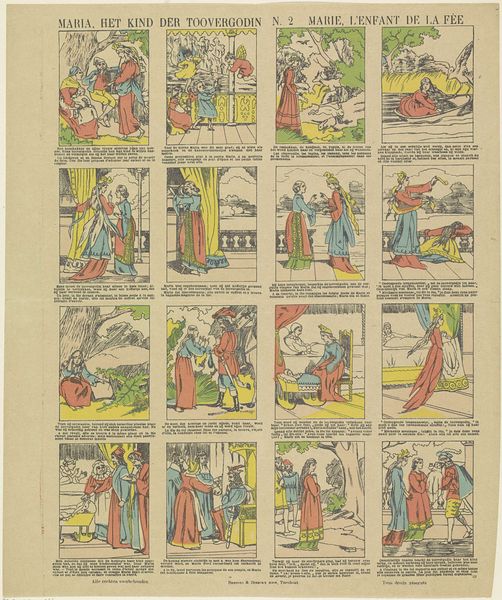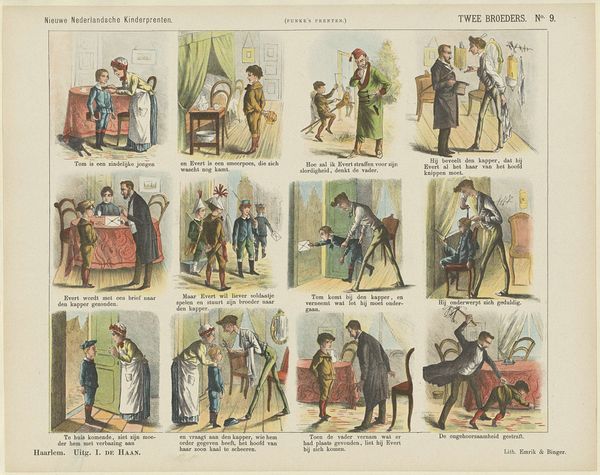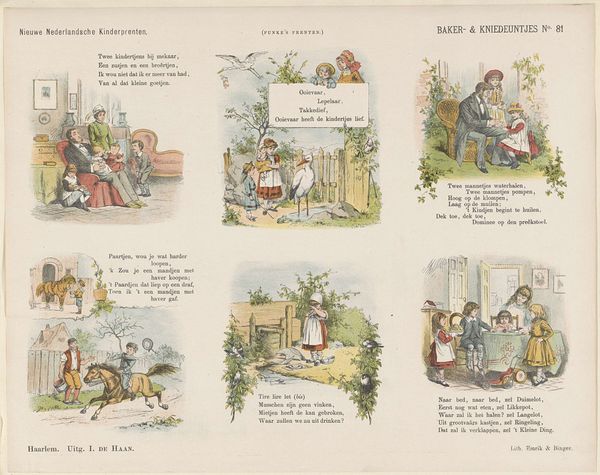
lithograph, print
#
narrative-art
#
lithograph
# print
#
folk-art
#
genre-painting
#
watercolor
Dimensions: height 347 mm, width 439 mm
Copyright: Rijks Museum: Open Domain
Curator: Here we have “Asschepoester,” dating from 1875 to 1903, by Jan de Haan. It's a lithograph, or perhaps even a watercolor imitating a lithograph. What’s your first impression? Editor: Well, it feels like a faded memory, almost dreamlike. There's a sweet innocence about it. Like looking through a dusty, treasured children's book. Curator: Absolutely. It's a set of sequential panels depicting the narrative of Cinderella, or Asschepoester, rooted in folk traditions. We see her transformation, her interactions with the fairy godmother, the ball… The structure creates an interesting commentary on the objectification of women. Editor: Hmm. I see what you mean, the sequential images definitely draw attention to the steps Cinderella is required to go through. The repetition, though… somehow it feels more like a dance, a series of delicate poses. The soft washes of color add to that dreamlike quality, turning what could be rigid, systematic oppression into this very romantic… story. Curator: Romantic, perhaps, but we also need to consider the narrative embedded within. Jan de Haan positions "Asschepoester" within a domestic sphere defined by servitude, which evolves into one of societal performance. The artwork subtly reinforces social structures regarding women and beauty. It’s also noteworthy the prominence afforded the stepsisters dressing for the ball; their figures dominate their panels. Editor: But, look at the detail in the clothing. I mean, really *look*! Those billowing skirts! They’re expressive of the aspirations, aren't they? And that final scene, the prince recognizing her – it has a kind of resolution and joy in its coloring and the tenderness of the moment. For me, there is optimism that speaks to individual fulfillment. Curator: Certainly, a utopian vision, though I see it filtered through layers of constructed norms. The artist highlights both aspiration and constraint in portraying the main character's evolution. Editor: It makes you wonder about Jan de Haan’s intention, doesn't it? Did he truly intend on portraying “constraints"? Curator: Precisely the question that makes it engaging to contemporary discourse! Editor: Ultimately, I'm left pondering if I should buy a bright pink gown myself… and crash a ball!
Comments
No comments
Be the first to comment and join the conversation on the ultimate creative platform.
